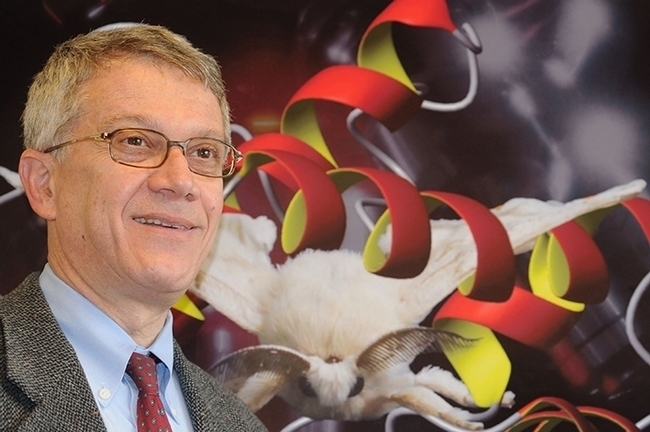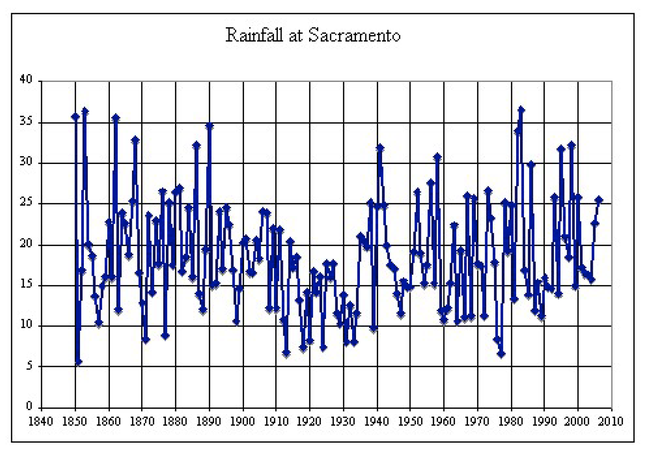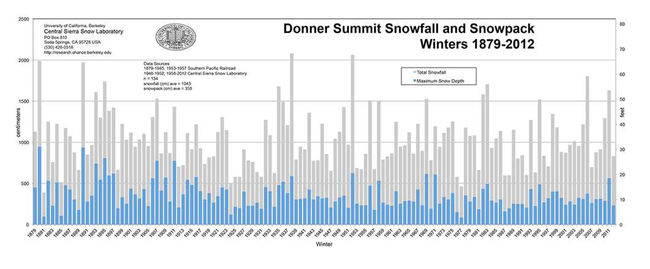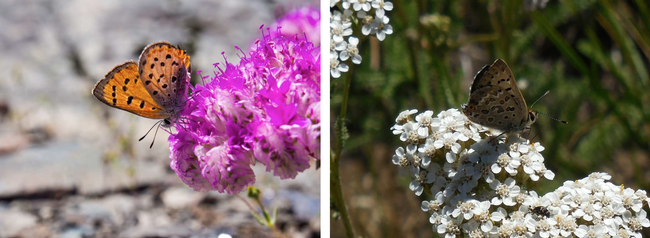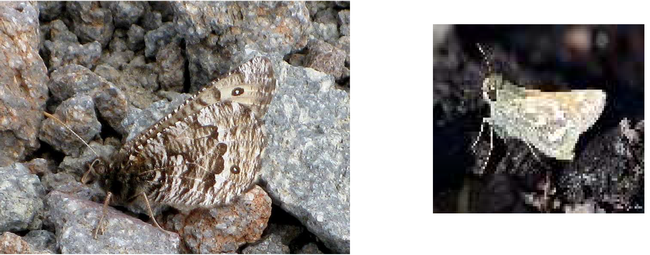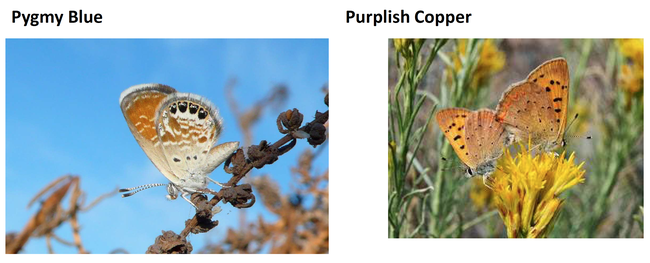- Author: Kathy Keatley Garvey
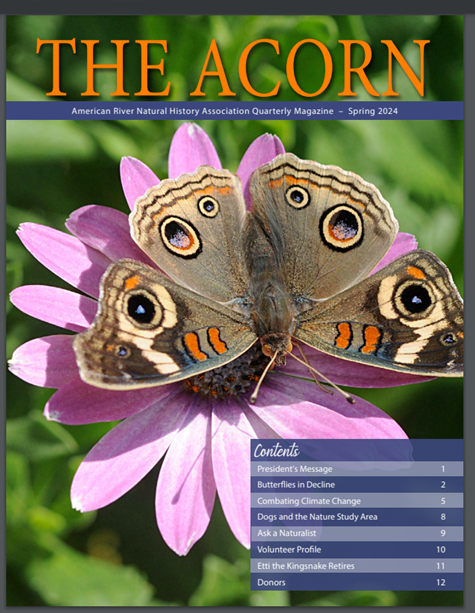
You'll learn which butterfly populations are struggling and which ones are doing well, and glean more information about the research of UC Davis distinguished professor emeritus Art Shapiro, and his collaborator, Professor Matt Forister of the University of Nevada, his former doctoral student.
Shapiro has been monitoring the butterfly populations of central California since 1972. His transect of ten fixed study sites sprawls from the Sacramento River Delta, through the Sacramento Valley and Sierra Nevada mountains, and to the high desert of the western Great Basin. The sites, Shapiro says, "represent the great biological, geological, and climatological diversity of central California."
The article is authored by entomologist Mary Louise Flint, a docent at the center and editor of the quarterly. She holds the title of professor of Cooperative Extension emerita, based in the UC Davis Department of Entomology and Nematology. She served as a longtime associate director of the UC Statewide Integrated Pest Management Program (UC IPM) until her retirement in June 2014. (See her biography on the UC IPM website).
"Over the last decade or two, scientists in many parts of the world have documented examples of declining insect num- bers—both in numbers of species (species richness) and in the number of individuals of each species (population levels)," Flint began. "Habitat loss, pesticide use, and climate change are usually identified as the main contributing factors, although circumstances vary among insect species and location."
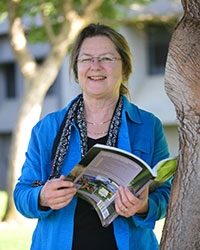
"Three of Shapiro's sample sites," Flint pointed out, "are relatively close to our nature area—Rancho Cordova, near the American River across from Sacramento Bar, North Sacramento on the American River near California State University, and West Sacramento in the Yolo Bypass near the causeway. (The Rancho Cordova site is closest and most similar to Effie Yeaw in habitat.) A close study of the data collected at these sites between 1988 and 2010 showed that summer minimum temperatures and fall maximum temperatures increased significantly and precipitation decreased. During this time, species richness tended to decrease after years of high temperatures and reduced precipitation."
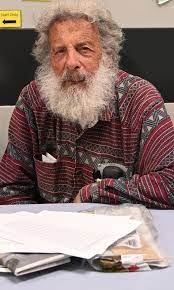
Among those on "the struggling list" are the monarch, Danaus plexippus; West Coast lady, Vanessa annabella; the great copper, Lycaena xanthoides; and the large marble, Euchloe ausonides. The large marble, "formerly common in the Central Valley, Delta, Bay Area and lower foothills...has suffered an unexplained crash and is teetering on the brink of regional extinction," according to Shapiro's website.
Those on the "doing well" list include the Gulf Fritillary, Agraulis vanillae; pipevine swallowtail, Battus philenor; fiery skipper, Hylephila phyleus; the Western tiger swallowtail, Papilio rutulus; and the gray hairstreak, Strymon melinus.
See Flint's article for more information, and access Shapiro's research research website, and Forister's research website.
A buckeye butterfly, Junonia coenia (image by yours truly) graces the cover. Numerous other butterfly images illustrate the piece.
Shapiro recently delivered a presentation, "Using Butterflies to Understand Biotic Responses to Climate Change," at the UC Davis emeriti celebration, organized and coordinated by UC Davis Distinguished Professor Walter Leal of the Department of Molecular and Cellular Biology. (See Shapiro's presentation on YouTube and coverage on Bug Squad blog.)
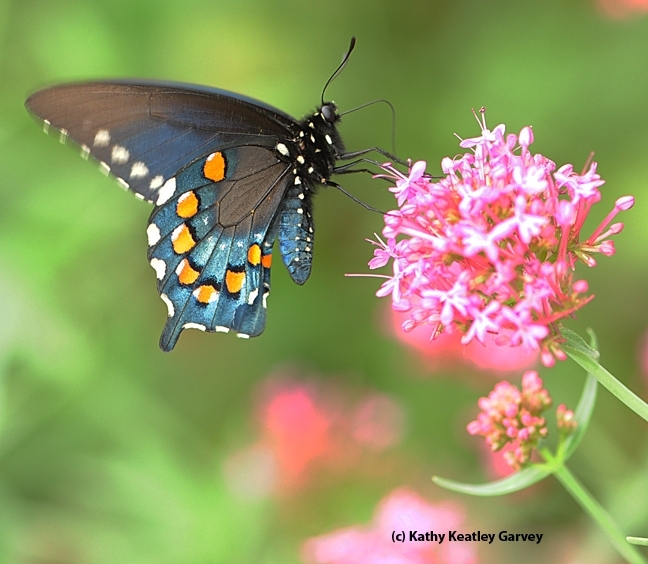
- Author: Kathy Keatley Garvey
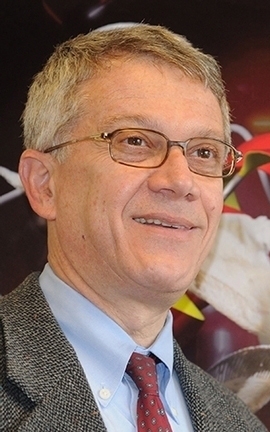
As mentioned earlier, two members of the Academic Senate's winners' circle are UC Davis Distinguished Professor Walter Leal of the Department of Molecular and Cellular Biology (and former professor and chair of the UC Davis Department of Entomology), and Professor Louie Yang of the Department of Entomology and Nematology (ENT).
Leal won the Distinguished Faculty Research Award (see Feb. 22 Bug Squad blog) and Yang won a Distinguished Teaching Award, undergraduate category (see Feb. 26 Bug Squad blog). UC Davis Distinguished Professor Bruce Hammock of ENT nominated Leal, while Joanna Chiu, professor and chair of ENT, nominated Yang.
The awards reception is Monday, May 13; more information is pending. "In all, 15 faculty members have received awards from the two groups at UC Davis," UC Davis Dateline reports. (See list of the recipients.)
Leal is the first UC Davis faculty member to win all three of the Academic Senate's most coveted awards: in research, teaching, and public service. In 2020, the Academic Senate awarded him the Distinguished Teaching Award for Undergraduate Teaching, and in 2022 Distinguished Scholarly Public Service Award.
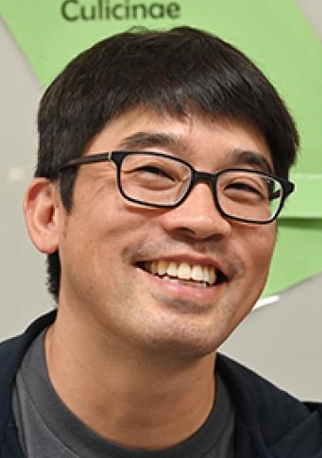
“Dr. Leal is an internationally recognized entomologist and a world leader in his field for his groundbreaking and transformative research in insect olfaction and chemical ecology,” Hammock wrote. "Walter is truly a renaissance man. "He chaired our entomology department from 2006 to 2008, and under his tenure, our department was ranked No. 1 in the country. I've long admired (1) his rigorous fundamental research programs supported by National Science Foundation, National Institutes of Health, and the U.S. Department of Food and Agriculture, and other agencies, (2) how he tackles and solves multiple challenging problems in insect olfaction and chemical ecology, (3) his grasp of how to organize and moderate highly successful worldwide research webinars (4) his generosity in helping other succeed and (4) his finely honed sense of humor."
Wrote Chiu: "I have watched him (Professor Yang) engage, inspire, and challenge his students, fostering creative and critical thinking like no one else I've ever seen. We deeply appreciate and admire his innovative and inclusive teaching, his exemplary work ethic, his welcoming demeanor, his dedication to his students, and his nationally recognized ecology expertise. Louie has received many well-deserved teaching and mentoring awards for his teaching contributions on and off campus.”
Of special note, too, is the James H. Meyer Distinguished Achievement Award, given annually to a member of the Academic Federation for "a distinguished record in research, teaching, and/or public service." This year the award went to Kirsten Gilardi, director of Karen C. Drayer Wildlife Health Center, and a health sciences clinical professor of Medicine and Epidemiology, School of Veterinary Medicine.
Wrote Dateline: "Health Sciences Clinical Professor Kirsten Gilardi has been part of the UC Davis Community since 1989. She is currently the director of the Karen C. Drayer Wildlife Health Center, a research, service and teaching center of excellence. In 2005, she founded the California Lost Fishing Gear Recovery Program, which hires experienced commercial scuba divers to remove gear and other marine debris from near-shore waters in a safe and environmentally sensitive manner. This program continues to help reduce the potential impact of losing fishing gear and marine debris on living marine resources and underwater habitat. Beyond her significant accomplishments in her field, her colleagues around the world highlight her passion for her position at UC Davis 'that expects her to protect wild animals and wild places.'"
Check out the Dateline website which includes a 2013 image of Gilardi with a silverback gorilla (image courtesy of Sandy Buckey.)
They all do UC Davis proud!
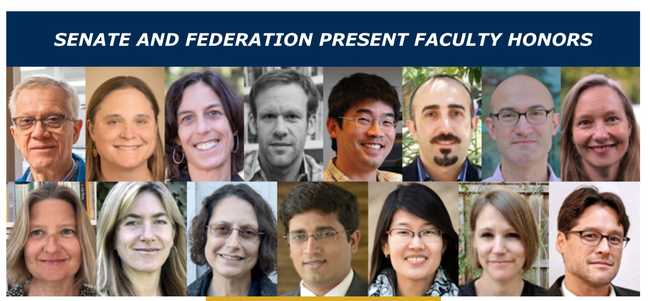
- Author: Kathy Keatley Garvey
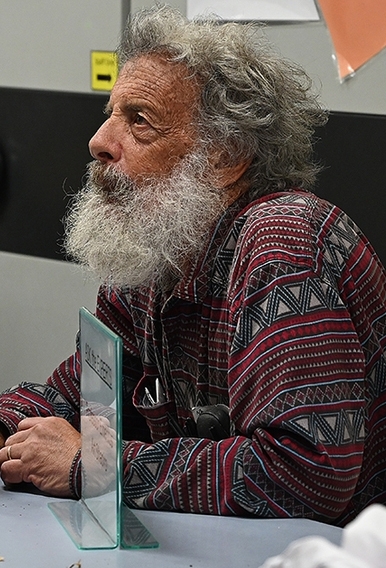
When UC Davis distinguished professor Walter Leal of the Department of Molecular and Cellular Biology organized and hosted an emeriti celebration honoring professors who recently transitioned to emeriti, he didn't stop when the presentations ended.
Leal invited his biochemistry students that he's teaching this quarter to summarize, in a short video, one of the emerti lectures. "I let them decide which one," he said. "They submitted 45 videos and covered all the speakers." The event, held in the International Center, celebrated 73 faculty who retired in the 2022-2023 cohort. Chancellor Gary May welcomed the crowd, and paid tribute to the new retirees and their accomplishments.
Butterfly guru Art Shapiro, UC Davis distinguished professor emeritus, who has monitored butterfly populations in Central California since 1972, spoke on "Using Butterflies to Understand Biotic Responses to Climate Change." He recently retired from the UC Davis Department of Evolution and Ecology faculty, but continues his research with his former doctoral student, Professor Matt Forister of the University of Nevada. Shapiro maintains a research website at https://butterfly.ucdavis.edu. (Read his emeriti presentation on the March 11th Bug Squad blog)
So which student chose to comment on Shapiro's presentation? A butterfly enthusiast: Elly Fry-Ross, a third-year biochemistry and molecular biology major with a minor in psychology.
And butterflies? "I've always loved butterflies ever since I was little," Elly said, adding that the colors fascinate her. "My parents used to take me to the rainforest exhibit at the California Academy of Sciences to see the butterflies and hopefully have one land on me!"
And every year on campus, Elly attends the butterfly and moth exhibit at the Bohart Museum of Entomology during the annual UC Davis Biodiversity Museum Day and during the campuswide Picnic Day, which this year is Saturday, April 20. (This year the Bohart Museum will be closed on Picnic Day, but will move its activities to a pop-up tent at Briggs Hall.)
Elly's career plans? To enroll in a medical school and become a physician.
See the student videos at https://www.youtube.com/watch?v=p1LZbErkx28
Emeriti Celebration Links
00:00 Getting ready to start 00:15 Opening remarks, Walter Leal 03:26 Land Acknowledgment 06:35 Chancellor Gary May 8:50 Cal Qualset 11:40 Paul Gepts presentation 42:37 Robert Szabo's impromptu remarks 45:40 Bruce Hammock 47:45 Isaac Pessah 1:15:40 Congratulations on your retirement, Jay Lund! 1:18:12 William (Bill) Lacy 1:22:05 Ines Hernandez-Avila 1:52:59 Ken Burtis 1:57:10 Art Shapiro 2:20:50 Q&A 2:28:50 Art Shapiro's additional remarks 2:29:44 Emeriti Napkin 2:29:57 UCDEA Video Recording Interview
Afternoon Session
https://youtu.be/AMs2Q1bimxA
00:00 Highlights of the luncheon 01:20 Suad Joseph, UCDEA 13:16 Mont Hubbard 16:40 Simon Cherry 51:44 Jeffery Gibeling 56:52 Subhash Risbud 1:23:25 Snapshot with undergraduate students 1:23:48 Clark Lagarias 1:26:19 Anne Britt 2:00:30 Sascha Nicklisch 2:03:53 Ron Tjeerdema 2:36:30 Edward Callahan 2:40:45 Andres Sciolla 3:09:41 Mary Croughan 3:18:10 Walter Leal 3:18:55 After the event
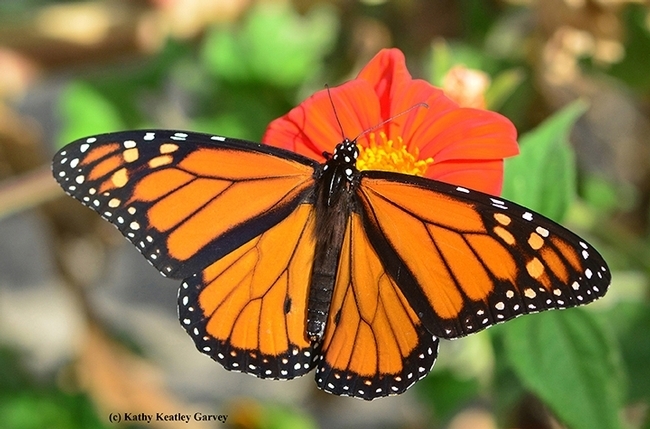
- Author: Kathy Keatley Garvey
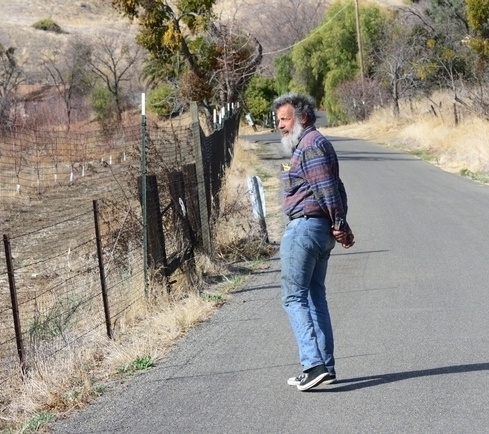
The emeriti celebrations are the brainchild of UC Davis distinguished professor Walter Leal of the Department of Molecular and Cellular Biology (and former professor and chair of the Department of Entomology). He organizes and hosts the events in the International Center.
The recent emeriti celebration honored 73 faculty who retired in the 2022-2023 cohort. Some discussed their research.
Shapiro titled his talk "Using Butterflies to Understand Biotic Responses to Climate Change."
Shapiro, who holds a bachelor's degree in biology from the University of Pennsylvania (1966) and doctorate in entomology from Cornell University (1970), began his UC Davis career in 1972 with the Department of Entomology. He recently retired from the UC Davis Department of Evolution and Ecology faculty, but continues his research with his former doctoral student, Professor Matt Forister of the University of Nevada.
Shapiro maintains a research website at https://butterfly.ucdavis.edu. Some excerpts from his slide show presentation:
How It All Began
In 1972, as a new assistant professor, I inaugurated what was supposed to be a 5-year study of butterfly phenology (seasonality) in an attempt to identify which weather variables had the greatest impact on the life-history “strategies” of species.
Why Five Years?
- That would give me enough variability for statistical analysis, using multivariate methods, and
- Given the time frame for my tenure decision, it would allow me to finish the project in case I had to leave.
- I got tenure. And I kept on gathering data!
Why Keep Going?
If you were here in the early 1970s, you'll recall that the climate was extraordinarily variable. That was great for me; the more year-to-year variation, the more could be teased out statistically about climate-life history correlations.
The variability continued, and the data were so good I didn't dare stop collecting them. What started as a 5-year project became a 45-year project!
At that time there was only one other longterm butterfly monitoring project in the world—in the U.K., started at the same time.
I started out trying to understand the climatic basis for “voltinism”—the number of generations (broods) per year--and the way each species spent what is for it the “adverse season.” But once I had several years of data a new question arose: what determines the “first flight date” (FFD) of a species in a given year?
This Graphic Illustrates Why I Kept Going
Look carefully at it! What pattern strikes your eye?
If you have studied statistics, you may have learned about "time series analysis," which is used to extract information from long series of repeated data or measurements.
An important idea here is the distinction between "signal" and "noise." Noise is short-term variability. Signal is longer-term trend.
There's lots of noise on this annual-rainfall plot, but is there any signal? To answer that, we need to look at more than one time frame. By inspection--the stats bear it out--the first third of this data set was extremely noisy and the last third nearly as much so.
The middle third was much less so. If we calculate means and variances--variance is a measure of dispersion around the mean--the middle third of years was both drier and more predictable than the others. I arrived just in time to exploit the return of the Gold Rush era climatic unpredictability, and I was in Seventh Heaven.
And here is the seasonal snowfall data from Donner Summit, where the pattern is less clear
Those factors are going to vary with altitude and climate
A species occurring here in the High North Coast Range of Colusa County has to deal with snowmelt timing, a factor that will not impinge directly on the same species in the foothills below. When we have multiple years of data for the same locations, we can work out detailed analyses of the factors controlling seasonability.
At low elevations, we find ample evidence of advancing first-flight dates (FFDs)
We have a set of 20 indicator species that have been tracked at all our low-elevation sites throughout the study (we had 23, but 3 have gone regionally extinct, like the Large Marble (Euchloe ausonides).
These two species have been the most responsive to climatic warning in our study: the Red Admiral (Vanessa stalanta) and the Field Skipper (Atalopedes campestris)
Both have fascinating back stories. The Red Admiral, which hibernates as an adult, also occurs in the U.K., where it has ALSO been the most phenologically responsive species to climatic warning. And the Field Skipper, which in the 1920s was confined to Southern California, expanded northward, reaching near the Oregon border by 1980 and subsequently expanding its breeding and overwintering range to Washington State and western Nevada, where it had previously been a rare stray. Its spread is statistically closely matched with climatic trends.
Cabbage White Butterfly
The Cabbage White Butterfly (Pieris rapae) has a special place in our study--because we enlist the general public in trying to document its FFD.
We offer a pitcher of beer for the first Pieris rapae collected in Yolo, Solano of Sacramento counties each year. The idea is to get as many people as possible out looking for it. If I begin losing frequently, this says I'm not looking hard enough. Public participation keeps me honest. I've lost 5 times in 45 years. Actually 7, but two finds were ruled inadmissible because the butterflies were caught indoors--both in kitchens. Sometimes a mature caterpillar will be brought in on a head of cabbage, escape undetected, and pupate somewhere. Then, given the higher indoor temperature, it hatches into an adult before any are flying outside. The rules originally didn't specify that the beast had to be caught outdoors. They do now. As sole judge, I simply declared those two indoor bugs ineligible!
So, what have we found?
Near sea level, of the 20 surviving indicator species, 9 are emerging significantly earlier in the 2010s than in the 1970s and 2 are significantly later--but those 2 are in the process of going regionally extinct and their apparent lateness appears to result from the low probability of encountering such rare species. The remainder are not statistically significant, but most are earlier. The average significantly earlier species is emerging 2/3 of a day earlier/year, on average, or a week earlier/decade!
One of the disappearing ones is the Field Crescent (Phyciodes campestris).
One consequence of climate change may be to disrupt butterfly-plant synchrony
Especially for specialist species, if the phenology of the insect responds to climate change differently from that of plants that are essential to its life cycle--be they larval host plants or adult nectar sources--that species is going to be in big trouble!
Many multiple-brooded lowland species change host plant with each generation, making this potentially a complex "many-body problem."

Butterfly seasonality is critically dependent on the amount of snow pack and the timing of snow melt. As a previous graphic showed, there as NOT been a clear trend in total seasonal snowfall at Donner Summit since records have been kept. This is a picture at 7000 feet on June 24 last year. During the preceding drought, there was no snow at all on the ground here by June 24 and many things were happening--flowers blooming, butterflies flying. Analysis of data from our mountain sites thus requires use of variables beyond those taken into account at lower elevations, and is very effort-intensive.

This is the ridgetop between Castle and Basin Peaks at 9000 feet, west slope at left. Note how the snow persists much later on the east slope. This is partly due to the SW wind redistributing snow from the west side to the east, generating massive "cornices" which are slow to melt and would form the nuclei of growing glaciers if favorable conditions persisted several years. Butterfly species that occur on both slopes may emerge weeks later on the east side than on the west slope at the same elevation, producing a prolonged flight season.
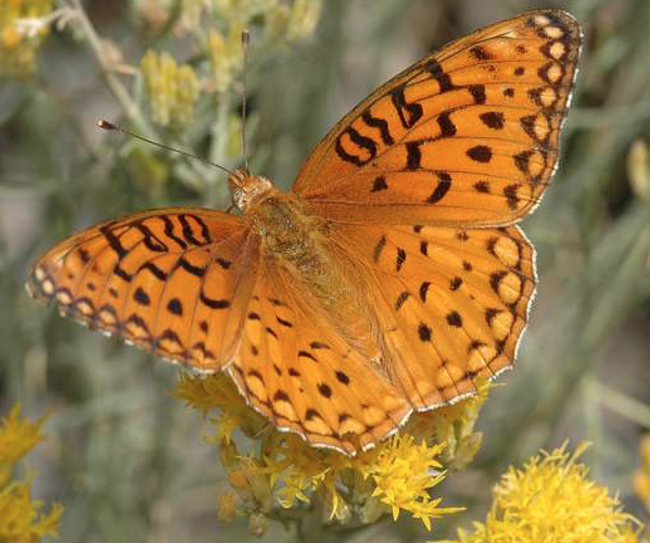
These two Coopers occur at 7000 feet, but have no host plant at 9000 feet. We see adults at 9000 feet with increasing frequency, but they cannot breed.

In unflooded places, wet ground and a saturated "boundary layer" of air above the ground are favorable for bacterial and fungal pathogens to proliferate, and overwinter mortality is heavy.
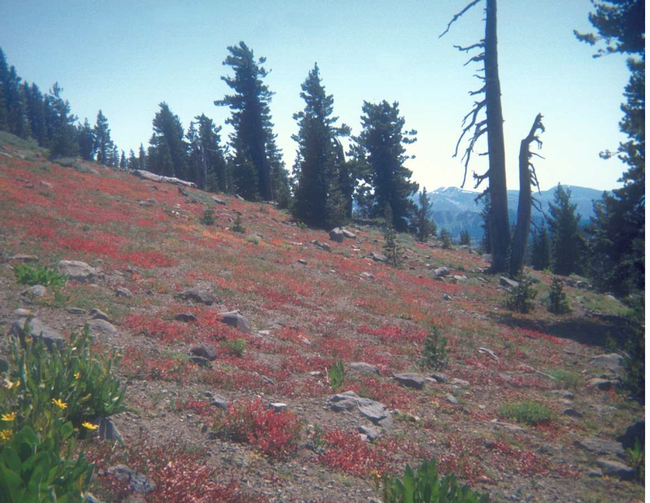
But lack of snow portends a poor butterfly season
But here we see as whatever moisture produced by melting snow is long gone. Butterfly seasons after a poor snow pack tend to end early as the vegetation dries up!
In the high country, heavy snow INCREASES butterfly numbers (and diversity to some extent), and lack of snow INCREASES them.
Because the recent drought went on for over 4 years, the cumulative damage to montane butterfly faunas was far too great to be alleviated by good overwinter survival under one year's heavy snow pack. There were too few animals under the snow at the outset.
Our butterfly faunas have experienced a great deal of climatic variation on multiple time scales. We know from fossil pollen and other indicators that California climates have been exceedingly variable since the end of the Pleistocene ice ages, some 15,000 years ago. Remember our discussion of noise vs. signal? In the short term, a 5-year drought is a critical event. IN the longer term, we know there have been 400-year droughts. We know that the vegetation that exists today--apart from human impacts!--can be seen as a freeze-frame taken from a very long movie. The butterflies we have today are the species that have been able to persist, either by adapting to climate change or by moving around to track favorable conditions--or both. Our studies document their coping mechanisms on a short (45-year) time scale--but no one has ever done that before. They give us data that will help us predict biotic responses to FUTURE climate change--which is essential for their well-being AND OURS.
Morning Session
https://youtu.be/J9bmDZv-WtM
00:00 Getting ready to start 00:15 Opening remarks, Walter Leal 03:26 Land Acknowledgment 06:35 Chancellor Gary May 8:50 Cal Qualset 11:40 Paul Gepts presentation 42:37 Robert Szabo's impromptu remarks 45:40 Bruce Hammock 47:45 Isaac Pessah 1:15:40 Congratulations on your retirement, Jay Lund! 1:18:12 William (Bill) Lacy 1:22:05 Ines Hernandez-Avila 1:52:59 Ken Burtis 1:57:10 Art Shapiro 2:20:50 Q&A 2:28:50 Art Shapiro's additional remarks 2:29:44 Emeriti Napkin 2:29:57 UCDEA Video Recording Interview
Afternoon Session
https://youtu.be/AMs2Q1bimxA
00:00 Highlights of the luncheon 01:20 Suad Joseph, UCDEA 13:16 Mont Hubbard 16:40 Simon Cherry 51:44 Jeffery Gibeling 56:52 Subhash Risbud 1:23:25 Snapshot with undergraduate students 1:23:48 Clark Lagarias 1:26:19 Anne Britt 2:00:30 Sascha Nicklisch 2:03:53 Ron Tjeerdema 2:36:30 Edward Callahan 2:40:45 Andres Sciolla 3:09:41 Mary Croughan 3:18:10 Walter Leal 3:18:55 After the event
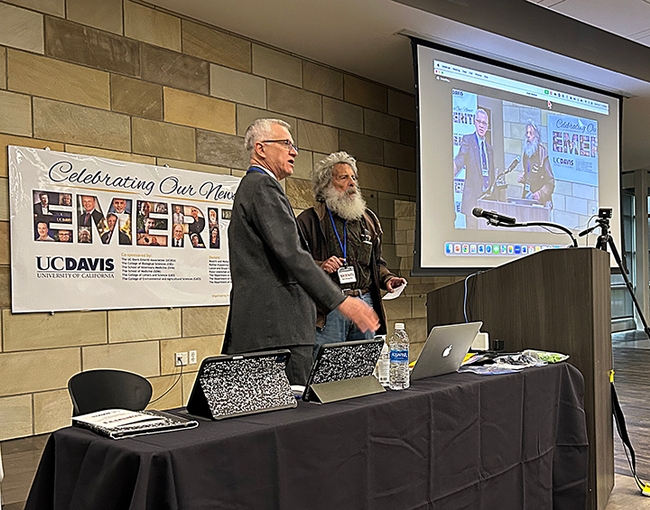
- Author: Kathy Keatley Garvey
Congratulations to UC Davis distinguished professor Walter Leal, the recipient of the Academic Senate's highly competitive 2024 Distinguished Faculty Research Award.
That makes three. Good things come in threes.
Leal is the first UC Davis faculty member to win all three of the Academic Senate's most coveted awards: in research, teaching, and public service. In 2020, the Academic Senate awarded him the Distinguished Teaching Award for Undergraduate Teaching, and in 2022 Distinguished Scholarly Public Service Award.
Leal, a member of the Department of Molecular and Cellular Biology since 2013 and former professor and chair of the Department of Entomology, commented: "Faculty at land-grant universities, like the University of California, have three hats labeled Teaching, Service, and Research. A significant challenge is to budget time to wear them equally and avoid the temptation to emphasize one part of the job over others. It is gratifying to be recognized by my peers as excelling in all areas. The Academic Senate Faculty Distinguished Research Award is particularly humbling because more than 3000 eligible faculty excel in all research areas on this campus. Why me? Because of my students, postdoctoral scholars, visiting scholars, collaborators, and colleagues. They deserve most of the credit for this honor. I accept it on their behalf. It is a team effort, like in a honey bee colony.”
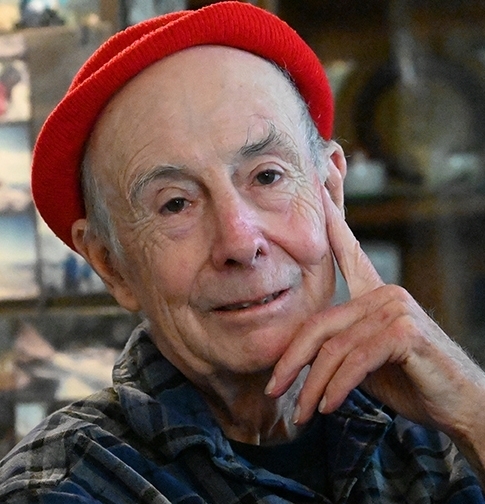
"Walter is truly a renaissance man," wrote Hammock. "He chaired our entomology department from 2006 to 2008, and under his tenure, our department was ranked No. 1 in the country. I've long admired (1) his rigorous fundamental research programs supported by National Science Foundation, National Institutes of Health, and the U.S. Department of Food and Agriculture, and other agencies, (2) how he tackles and solves multiple challenging problems in insect olfaction and chemical ecology, (3) his grasp of how to organize and moderate highly successful worldwide research webinars (4) his generosity in helping other succeed and (4) his finely honed sense of humor."
“Walter has been exceptionally conscientious, active, and generous in professional service at UC Davis,” Hammock pointed out. “In August of 2021, he achieved a ‘first' for international science communication when he organized and led the extraordinary virtual conference ‘Insect Olfaction and Taste in 24 Hours Around the Globe.' I especially applaud him for elucidating the mode of action of the insect repellent DEET, developed in 1946 and known as ‘the gold standard of
repellents.' Its mode of action remained an enigma for six decades until Walter's discovery. Inresearching the neurons in mosquito antennae sensitive to DEET, he isolated the first DEET-sensitive odorant receptor, paving the way for the development of better repellents.”
Leal is a newly elected trustee of the Royal Entomological Society, the 13-member council that governs the 190-year-old international organization. He is the first UC Davis scientist to be elected a trustee. And he's chair of the Council of the International Congresses of Entomology, the body that ensures the continuity of the international congresses of entomology. He co-chaired the 2016 International Congress of Entomology, which drew 6,682 registrants from 102 countries to Orlando, Fla.
Among Leal's many honors: Fellow of the Entomological Society of America (2009), American Association for the Advancement of Science (2005), and the National Academy of Inventors (2019).
A native of Brazil, Leal joined the UC Davis entomology faculty in 2000, after serving as the head of the Laboratory of Chemical Prospecting, National Institute of Sericultural and Entomological Science (NISES), Ministry of Agriculture, Forestry, and Fisheries, Japan. In 2013, he accepted a position as professor of biochemistry, Department of Molecular and Cellular Biology. (See news story)
Frankly, we don't know how Leal does it all. He not only excels at research, teaching and public service, but he is widely known as "The UC Davis Ambassador," organizing campus-wide celebrations for faculty transitioning to emeriti.
As an aside, two UC Davis entomology faculty members scored two, but not three, of the Academic Senate's coveted awards. Bruce Hammock received the Distinguished Faculty Research Award in 2001, and the Distinguished Teaching Award (graduate student/professional category) in 2008. UC distinguished professor of entomology, James R. Carey, took home the Academic Senate's Distinguished Teaching Award (undergraduate student category) in 2014 and the Distinguished Scholarly Public Service Award in 2015.
Six other entomology faculty members have received Academic Senate awards:
- UC Davis distinguished professor Jay Rosenheim, Distinguished Teaching Award (undergraduate student category) in 2011
- UC Davis distinguished professor Lynn Kimsey (now emerita), Distinguished Scholarly Public Service Award in 2016
- UC Davis distinguished professor Frank Zalom, Distinguished Scholarly Public Service in 2017
- UC Davis professor and now department chair Joanna Chiu, Distinguished Teaching Award (graduate/professional category) in 2022
- UC Davis distinguished professor Diane Ullman, Distinguished Teaching Award (undergraduate category) in 2022
And the latest to join the winner's circle: Professor Louie Yang won the Distinguished Teaching Award (undergraduate category), announced today. More on this amazing teacher and mentor is pending.
